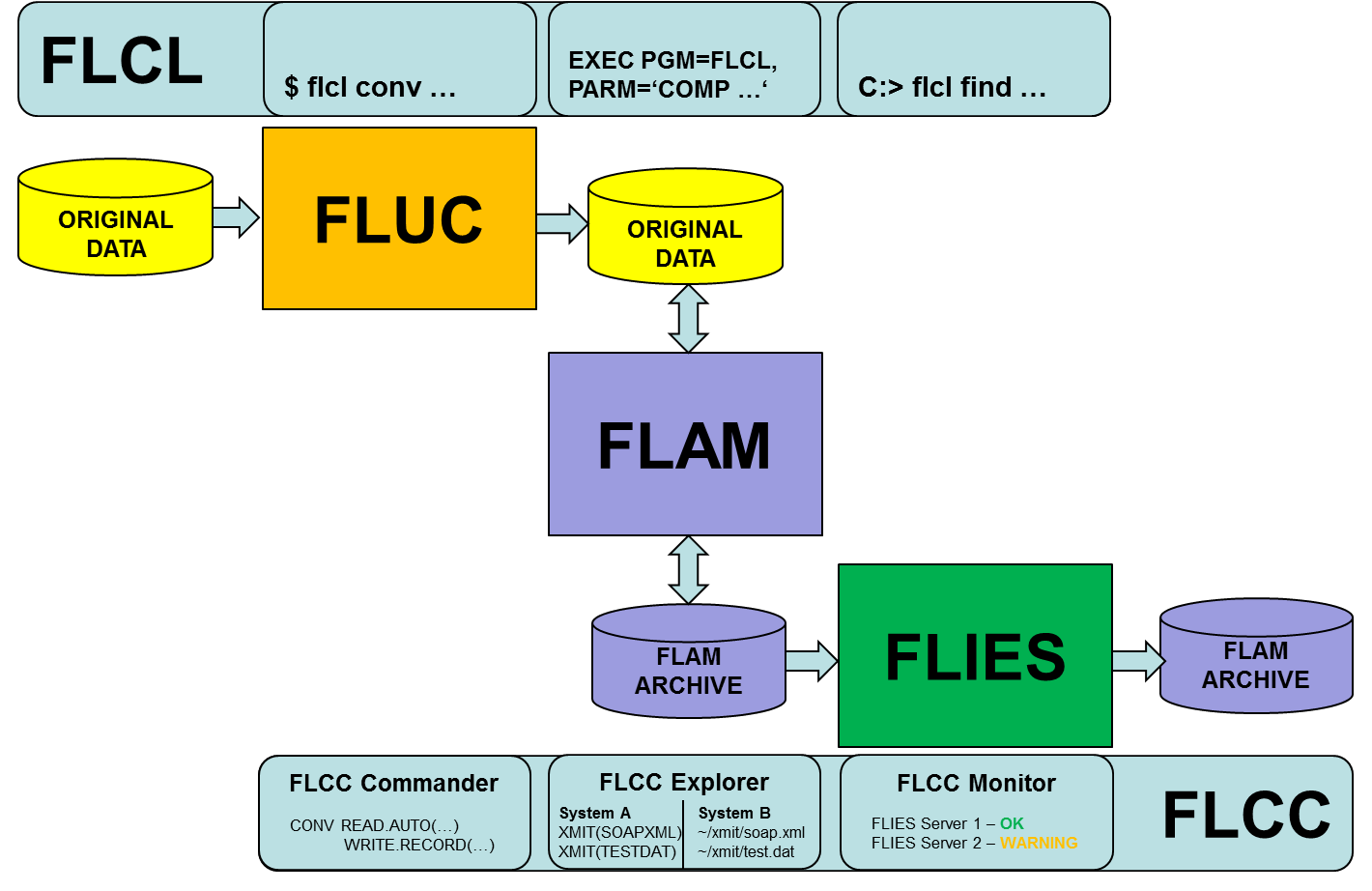Portfolio
The portfolio of the Frankenstein Limes Infrastructure in version 5 is split into three main product groups:
- The Frankenstein Limes Universal Converter (FLUC) allows conversion of original data into other original data. It offers all conversion capabilities of FLAM without requiring a FLAM archive.
- The Frankenstein Limes Access Method (FLAM) enables accessing compressed and encrypted FLAM archives to access the plain data, to change it, to delete it or to add new information to archives. The FLAM commands COMP and DECO of the command line program FLCL can be used to add original data to FLAM archives, respectively restore the original data, optionally execution conversion steps while doing so. Our APIs can be used to access individual elements for transparent integration into various operating systems (mounting as filesystem, subsystem on the host, SPI for Java).
- Our Frankenstein Limes Integrated Extended Security (FLIES) facilitates the management of compressed and encrypted FLAM archives without access to their contained data. It is the tool for network and archive operators as well as for secure private clouds. FLIES can be used, for example, to search withing compressed and encrypted archives (FIND). The result sets consist of still compressed and encrypted FLAM archives. However, the amount of data has been reduced to a minimum to save computational and transmission costs.

Each of these three product groups offers different APIs (Callable Services) for integration into other applications, client / server components and various transparent integration options into existing infrastructures. These products can be integrated into automated processes (batch processing, scripts) through various commands (CONV, COMP, DECO, FIND, ...) of the Frankenstein Limes Command Line (FLCL) batch utility. Furthermore, there is a central user interface, the Frankenstein Limes Control Center (FLCC), with different views (Commander, Explorer, Monitor, ...) that can be used to use all three product groups.

